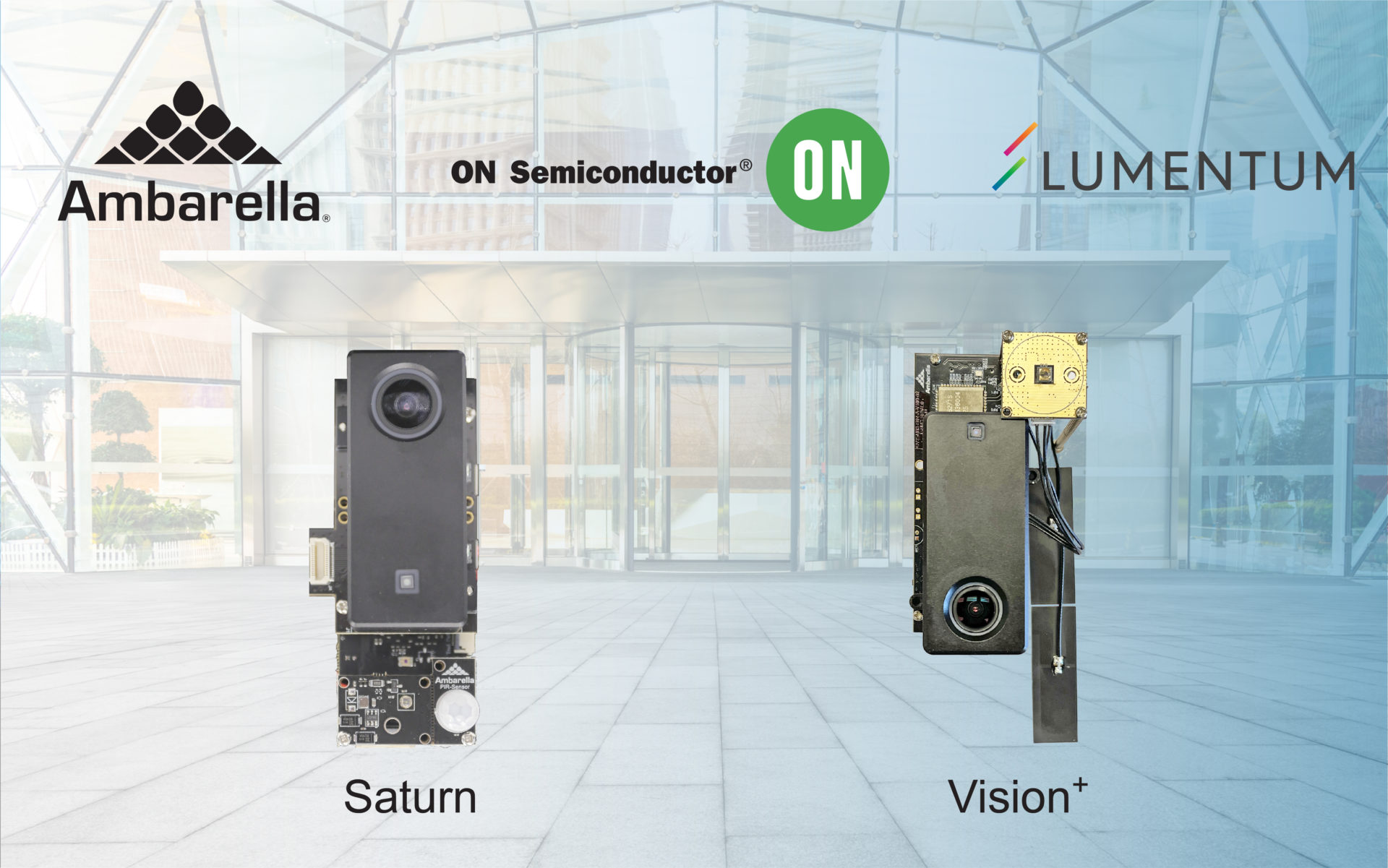
A partnership between Ambarella, Lumentum, and ON Semiconductor has resulted in a new series of hardware reference designs for biometric access control, 3D electronic locks, occupancy sensing and more.
Building on our 2020 presentation on next-generation access control, Ambarella, Lumentum, and ON Semiconductor earlier this month held a webinar, which is currently available on-demand, to discuss the role of each company’s technologies in the deployment of joint solutions for “ambient intelligence.” This term is used to describe environments where devices work together seamlessly to make daily tasks easier and safer by recognizing people and predicting their needs, rather than requiring a direct human interface.
At the forefront of our discussion are two new joint advanced hardware reference designs, Saturn (for smart locks with facial recognition and anti-spoofing) and Vision+ (for 4K access control and time attendance), both of which leverage Ambarella’s edge AI vision SoCs, ON Semiconductor’s RGB-IR CMOS image sensors, and Lumentum’s VCSEL-powered illumination technologies to enable a variety of functions in smart buildings, including smart sliding door automation, biometric access control, anti-tailgating, and occupancy sensing. These two new reference designs, in combination with our existing Janus reference design (for 2MP access control and time attendance) and the new CV2x indirect time of flight development kits (for anti-tailgating, entry/exit sensors, and occupancy sensing), offer a complete platform of solutions for smart building applications.
Below is an excerpt from the webinar synopsis:
One of the most practical ways that the growing convergence of AI and IoT, or AIoT, will impact our lives in the near term is in how we interact with the world, from unlocking doors, to entering an office building, to checking in at an airport, to elder and in-patient care.
IoT devices are getting smarter through the integration of AI that obtains insights from data. At the same time, when immediate actions are required from an IoT device, the user experience is determined by how well the AI algorithm works, which is dependent on being trained by large amounts of quality data. Unlike facial recognition, with its vast set of available data, most other applications lack the required data pool to provide effective AI results. So how can we improve this? By combining highly efficient edge AI processing and 3D sensing, we can create endpoint systems that interact intelligently and unobtrusively with people.
In this webinar, we discuss market trends and the technology demands of real-world deployments, taking a deep dive on smart building systems that combine multiple 3D sensing modalities with image sensors to create vastly improved outcomes for a variety of use cases. We also include straightforward methods for achieving these next-generation systems using reference designs employing the latest RGB-IR image sensors, 3D sensing, and edge AI vision systems on chip (SoCs).
Click here to view a replay of our webinar and access our presentation slides (registration required).
For more information, contact Ambarella: https://www.ambarella.com/contact-us/.
